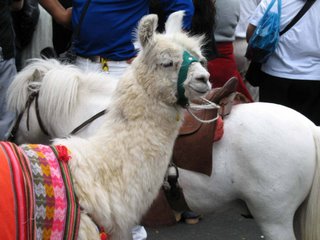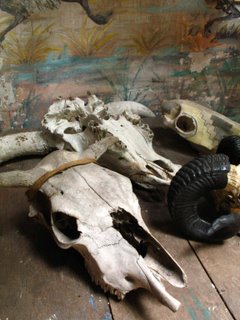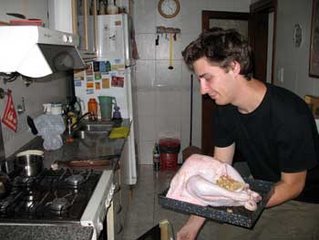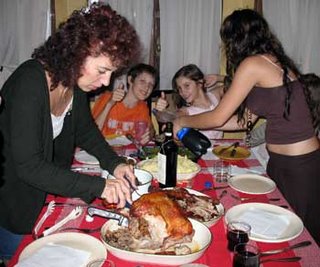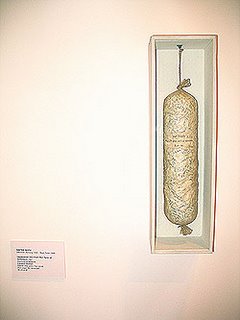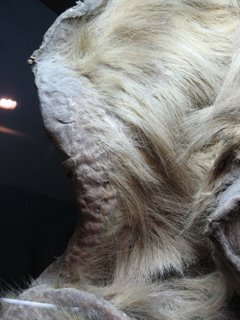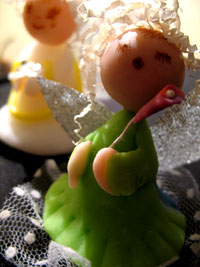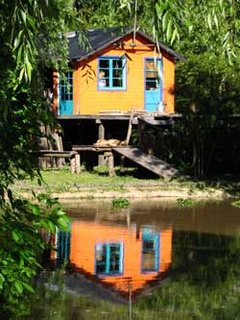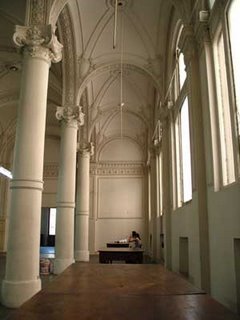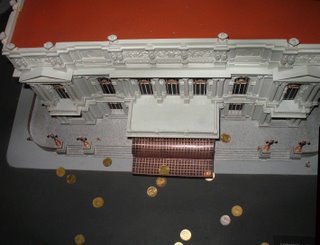Futbol Americano & Fancy Dinners
 With the baseball season long over and the occasional longing for the comforts of home creeping in, Emily and I have lately been searching for a few red-blooded American activities to do in our spare time. Our American housemate sometimes asks us if we’re interested in accompanying him to a terrible expatriate bar that’s either called “Remember the Alamo” or “Shoeless Joe’s” (the sign reads “Remember the Shoeless Joe’s Alamo”), but we’ve since learned our lesson. Desperate for ideas, we’ve recently started doing what everyone with a flag in their yard and Uncle Sam in their heart does on a weekly basis. You guessed it, we’re betting on football.
With the baseball season long over and the occasional longing for the comforts of home creeping in, Emily and I have lately been searching for a few red-blooded American activities to do in our spare time. Our American housemate sometimes asks us if we’re interested in accompanying him to a terrible expatriate bar that’s either called “Remember the Alamo” or “Shoeless Joe’s” (the sign reads “Remember the Shoeless Joe’s Alamo”), but we’ve since learned our lesson. Desperate for ideas, we’ve recently started doing what everyone with a flag in their yard and Uncle Sam in their heart does on a weekly basis. You guessed it, we’re betting on football.On a typical week, Argentine television broadcasts two games––the Sunday night game and the Monday night one. Staying up until 2 am to watch mediocre NFL teams play meaningless contests isn’t something I’ve ever made a habit of doing back home, but down here we’ve grown pretty desperate. So, usually we watch. And very often we bet a dinner on the outcome. Back home these dinners would have probably set us back about $80, but here in Buenos Aires they only cost the losing party $25. In other words, you don’t need to go calling any gambling addiction hotlines yet (the number for drinking problems is a better bet to keep by the phone).
As the savvy prognosticator of the recent Colts victory over the Pats, I was recently treated to a tasty meal at Almacen Secreto, a “secret” restaurant in Palermo. The chic café, which is run out of a couple’s apartment, specializes in the cuisine of Salta, a province in the northwest of Argentina. Light on steak and heavy on stews, tamales, and fruity malbecs, it was a refreshing change of pace from the typical gauntlet-de-bife. As you can see from the picture, the joint was both intimate and colorful. I ordered charqui (a sun-dried, jerky-like beef) and Emily had cazuela de gallina, a chicken dish. The tamale appetizers were tasty and the wine was great, but the highlight was the dessert––a milled grain covered in milk and flavored with honey, clove, and other spices.
Last week the Bears bit the dust, so on Thursday I’m obliged to take Emily out. Because it’s been a whole two weeks or something ridiculous since we’ve last tasted offal, I think we’re going to check out a recommended parilla in San Telmo. Emily has begrudgingly agreed in advance to a traditional Argentine parillada (mountains of steak, sweetbreads, blood sausage, and more) so it should be a treat. And, of course, it should go without saying that if you have hot tips on games happening this weekend, you should contact me privately. -NSH
